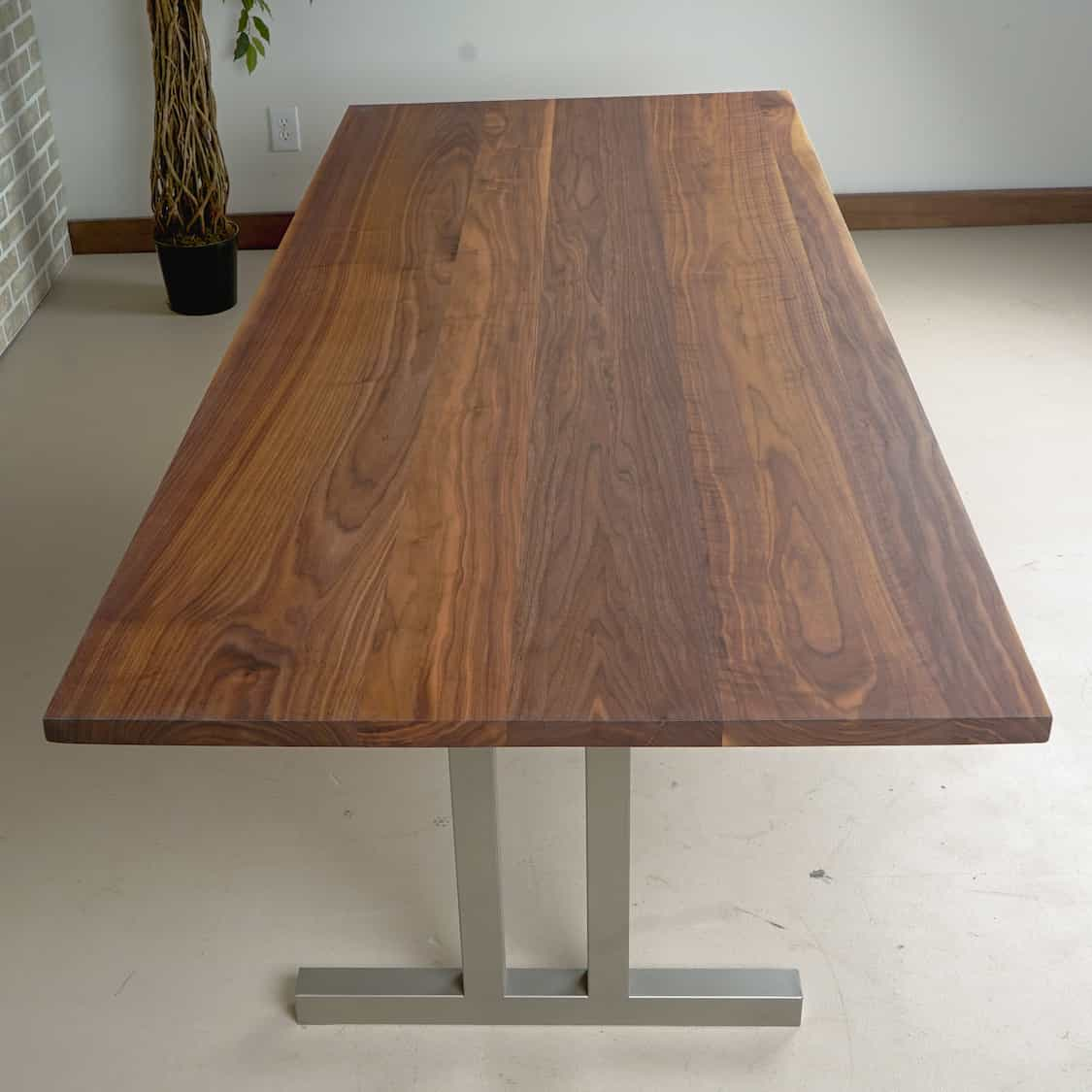Discovering the Various Types of Table Legs Timber for Your Dining Space
The selection of dining table legs wood can greatly impact both the useful and visual top qualities of your dining space. Solid wood alternatives, such as oak and walnut, provide a traditional look with unrivaled longevity, while crafted timber alternatives offer innovative styles that simulate the splendor of natural grains.
Solid Timber Options

Unlike crafted products, strong timber is much less susceptible to bending and damage over time when appropriately preserved. Each piece of solid wood is distinct, showcasing individual qualities that add to the charm and character of the eating table.
In addition, strong timber can be completed in many methods, ranging from natural oils to stained finishes, allowing homeowners to personalize their furnishings to match their style. In recap, choosing solid timber for dining table legs not only makes sure architectural stability however also enhances the aesthetic allure of the dining area, making it a rewarding financial investment for any type of home.
Engineered Wood Alternatives

Plywood, created from several layers of wood veneer, is secure and especially strong, making it a superb option for dining table legs. Its split structure permits it to withstand changes in moisture and temperature level better than typical strong wood. MDF, on the various other hand, offers a smooth surface area for painting or veneering, allowing designers to attain a polished appearance while preserving architectural integrity.
When selecting engineered timber alternatives, it is vital to take into consideration the desired use and preferred visual. These products not just enhance the functionality of dining areas yet additionally allow for better design adaptability, making certain that modern and typical styles can coexist harmoniously.
Reclaimed Wood Features
Recovered wood offers an one-of-a-kind mix of sustainability and personality, making it a significantly popular choice for dining table legs. Sourced from old barns, factories, and other structures, reclaimed timber embodies a history that brand-new products just can not reproduce. Each item brings its own story, marked by distinctive blemishes, knots, and varying grain patterns, which add to a table's one-of-a-kind visual charm.
In enhancement to its visual charm, recovered timber is an eco-friendly choice. By repurposing previously utilized materials, it lowers the need for new lumber, thus helping to conserve woodlands and lessen waste. This lines up with a growing customer preference for sustainable practices in home furnishings.
Additionally, redeemed timber is usually a lot more resilient than recently collected wood because of its age. The natural drying out process that recovered timber undergoes lead to a denser and more powerful product, making it much less vulnerable to warping and splitting. This boosts the long life of dining tables, allowing them to withstand the roughness of daily usage.
Softwood vs. Wood
When selecting dining table legs, recognizing click to find out more the distinctions in between softwood and wood is essential for accomplishing both functional and visual goals. They commonly show an even more rustic appearance, making them ideal for country-style or laid-back eating spaces.
On the various other official site hand, woods, sourced from deciduous trees like maple, oak, and cherry, are renowned for their thickness, stamina, and resilience. The complex grain patterns and abundant shades of woods offer a ageless and innovative appeal, making them perfect for formal eating settings. While hardwoods tend to be a lot more expensive and much heavier, their strength against damage frequently warrants the financial investment.
Ultimately, the option between softwood and wood for dining table legs ought to align with your design vision, use demands, and spending plan, making certain that your eating space reflects your personal design while continuing to be useful gradually.

Coatings and Therapies
The aesthetic allure and long life of eating table legs can be considerably enhanced with numerous coatings and therapies. These procedures not just shield the timber from damages yet also raise its look, allowing it to match varied indoor styles.
One common treatment is discoloring, which permeates the timber and boosts its all-natural grain while including color. Spots supply a rich, stylish look, allowing property owners to match their furnishings with existing style. Conversely, clear surfaces such as polyurethane or varnish develop a safety layer without changing the wood's initial color, making sure toughness against wear and tear.
In addition, all-natural oils, like tung or linseed oil, nurture the timber and provide a refined shine, all while being environment-friendly. These oils allow the surface to take a breath, stopping moisture build-up and potential bending.
For those seeking a rustic appeal, distressed or weather-beaten finishes can be put on create an aged look, including personality to the piece. Inevitably, the choice of treatments and coatings depends upon individual preference, wanted aesthetics, and the certain wood kind, making it important to consider these aspects when selecting table legs for your space.
Final Thought
Solid timbers, crafted choices, and redeemed choices each deal distinctive benefits, providing to different preferences and demands. Inevitably, the selection of timber kind need to align with preferred style, longevity, and ecological factors to consider, enhancing the overall dining experience.
The choice of dining table legs wood can profoundly impact both the aesthetic and functional qualities of your dining area - Dining Table Legs Wood. Strong wood choices, such as oak and walnut, supply a traditional look with unparalleled sturdiness, while engineered wood choices offer innovative layouts that simulate the richness of natural grains. Solid timber uses a classic top quality that can raise the overall design of an eating room. Each piece of strong timber is special, showcasing individual characteristics that include to the beauty and character of the dining table
In addition, reclaimed timber go right here is usually a lot more long lasting than recently collected wood due to its age.